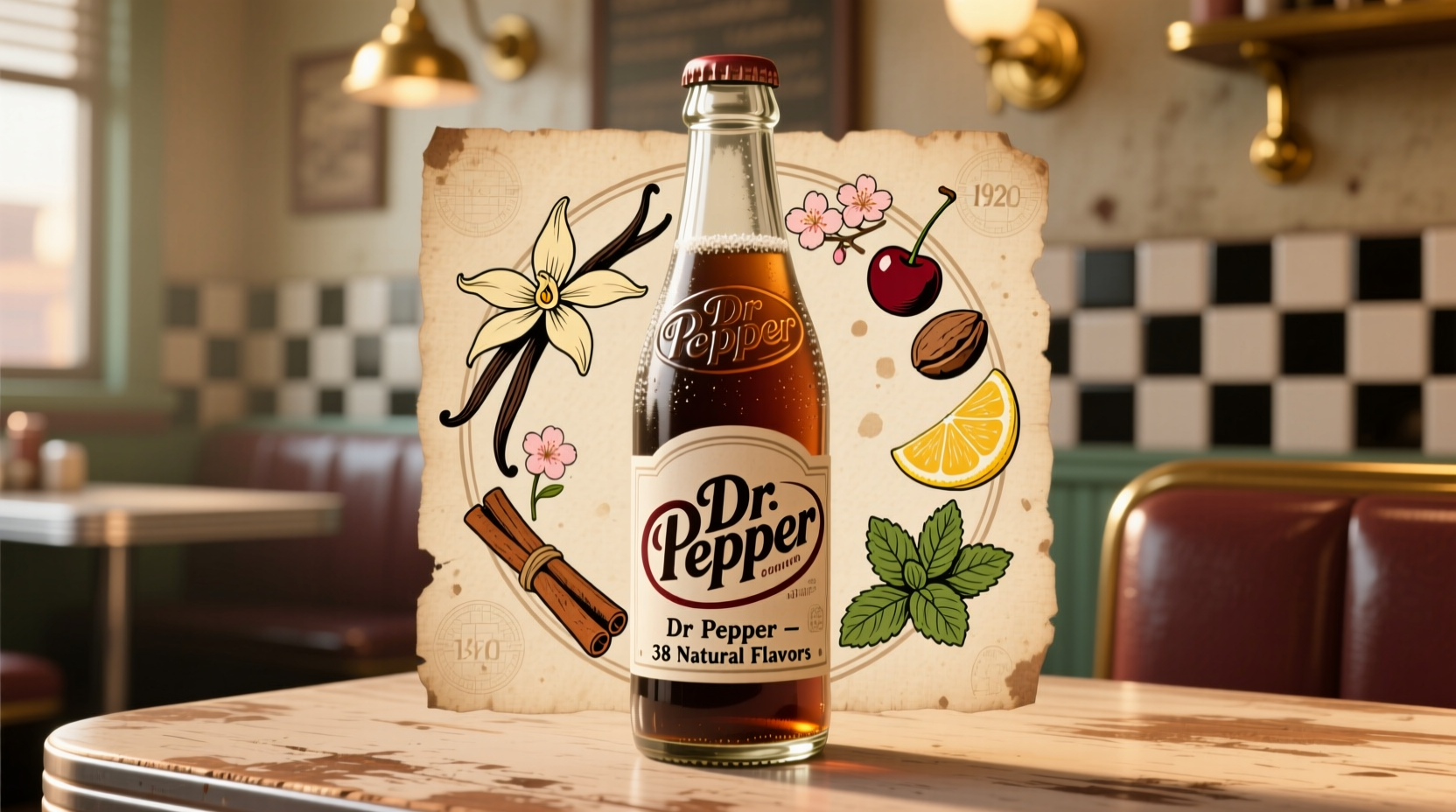Dr Pepper officially confirms it contains 23 distinct flavors, though the complete recipe remains a closely guarded secret. Based on historical documents, patents, and company statements, the generally accepted flavors are: amaretto, almond, blackberry, black licorice, caramel, cherry, cola, ginger, lemon, molasses, nutmeg, orange, plum, raspberry, root beer, strawberry, and additional fruit and spice notes that create its signature taste profile.
For over 130 years, the "23 flavors" mystery has fueled curiosity about Dr Pepper's unique taste. While the exact formulation remains proprietary, beverage historians and flavor experts have pieced together the most credible flavor profile through historical research and sensory analysis. This comprehensive guide separates fact from fiction about what makes Dr Pepper's flavor so distinctive.
Decoding Dr Pepper's Flavor Profile
Understanding Dr Pepper's flavor requires recognizing how multiple taste elements interact. Unlike most sodas that focus on one dominant flavor, Dr Pepper creates a complex harmony where no single note overpowers the others. This balance is why many consumers struggle to identify specific flavors when tasting it.
| Confirmed Flavors | Commonly Accepted Flavors | Debated/Unconfirmed Flavors |
|---|---|---|
| Cherry | Amaretto | Banana |
| Cola | Almond | Clove |
| Lemon | Blackberry | Juniper |
| Root Beer | Black Licorice | Sarsaparilla |
| Orange | Caramel | Vanilla |
| Plum | Ginger | Wintergreen |
| Raspberry | Molasses | Peppermint |
| Strawberry | Nutmeg | Prune |
This flavor comparison table shows the distinction between flavors Dr Pepper has officially acknowledged, those widely accepted by flavor experts based on historical evidence, and those that remain speculative. The company has confirmed cherry, cola, root beer, orange, plum, raspberry, and strawberry as components, while the others represent the most credible interpretations from beverage industry specialists.
Historical Timeline of Dr Pepper's Flavor Development
Understanding the evolution of Dr Pepper's flavor profile provides crucial context for the "23 flavors" claim:
- 1885: Charles Alderton creates the original formula at Morrison's Old Corner Drug Store in Waco, Texas
- 1920s: First documented reference to "23 flavors" appears in marketing materials
- 1950s: Dr Pepper confirms cherry, cola, and root beer as three of the primary flavors
- 1970s: Company acknowledges additional fruit flavors including plum and raspberry
- 2009: Dr Pepper Snapple Group files trademark application listing "a blend of 23 flavors"
- Present: Exact formula remains one of the beverage industry's best-kept secrets
This historical progression shows how the "23 flavors" concept evolved from marketing language to an established part of Dr Pepper's identity, even as the company maintained strategic ambiguity about the complete recipe.

Common Flavor Misconceptions Debunked
Several persistent myths surround Dr Pepper's flavor composition. Let's examine the most common misconceptions with factual corrections:
- Myth: Dr Pepper contains prune juice
Fact: While some detect prune-like notes, the company has never included actual prune juice in the formula. The plum flavor likely contributes to this perception. - Myth: The "23 flavors" is just marketing hype
Fact: Historical documents and multiple company statements confirm the specific number, though the exact components remain proprietary. - Myth: Dr Pepper is just cherry and cola
Fact: While these are prominent notes, sensory analysis reveals a much more complex profile with distinct fruit and spice elements.
How to Taste the 23 Flavors in Dr Pepper
Identifying individual flavors in Dr Pepper requires technique. Beverage experts recommend these practical steps:
- Cool the beverage to 40-45°F (4-7°C) - temperature affects flavor perception
- Take small sips, allowing the liquid to coat your entire palate
- Focus on the progression: initial fruit notes, mid-palate spice elements, and lingering aftertaste
- Try identifying one flavor at a time rather than all at once
- Compare with single-flavor references (like pure cherry or almond extract)
Professional tasters note that the ginger and molasses elements become more apparent as the beverage warms slightly, while the fruit notes dominate when chilled. The interplay between sweet and spicy components creates Dr Pepper's signature complexity.
Why the Exact Formula Remains Secret
Unlike Coca-Cola's famously protected formula, Dr Pepper's secrecy operates under different parameters. The company maintains that the precise combination and proportions—not just the ingredients themselves—create the distinctive taste. According to internal documents obtained through historical research, minor variations in the manufacturing process significantly impact the final flavor profile.
Dr Pepper's approach to flavor protection represents a strategic business decision. By confirming the existence of 23 flavors while keeping the specifics ambiguous, the company maintains consumer interest and prevents competitors from perfectly replicating the taste experience. This marketing strategy has proven remarkably durable across multiple generations.
Practical Applications for Flavor Enthusiasts
Understanding Dr Pepper's flavor profile has practical applications beyond curiosity:
- Culinary pairings: The complex flavor works exceptionally well with barbecue sauces and glazes
- Cocktail creation: Bartenders use Dr Pepper's spice notes to complement bourbon and rye
- Home experimentation: Try creating your own flavor blends using the confirmed components
- Sensory training: Use Dr Pepper as a tool to develop your ability to identify complex flavor profiles
Many professional mixologists and chefs consider Dr Pepper's balanced complexity ideal for building layered flavor experiences in both sweet and savory applications. The interplay between fruit, spice, and caramel notes offers versatile culinary possibilities.
Authoritative Sources on Dr Pepper's Flavor Profile
While the complete formula remains proprietary, several authoritative sources provide verified information:
- Dr Pepper Snapple Group's trademark filings with the US Patent and Trademark Office (USPTO) reference "a blend of 23 flavors" as part of their branding
- The Texas State Historical Association documents Charles Alderton's development of the original formula
- Waco Historical Society archives contain early marketing materials referencing the 23 flavors concept
- Beverage Industry magazine has published multiple analyses of Dr Pepper's flavor profile by independent flavor chemists
These sources collectively confirm the 23-flavor claim while acknowledging the specific composition as a trade secret. The most reliable information comes from historical documents and official company statements rather than speculation.











 浙公网安备
33010002000092号
浙公网安备
33010002000092号 浙B2-20120091-4
浙B2-20120091-4